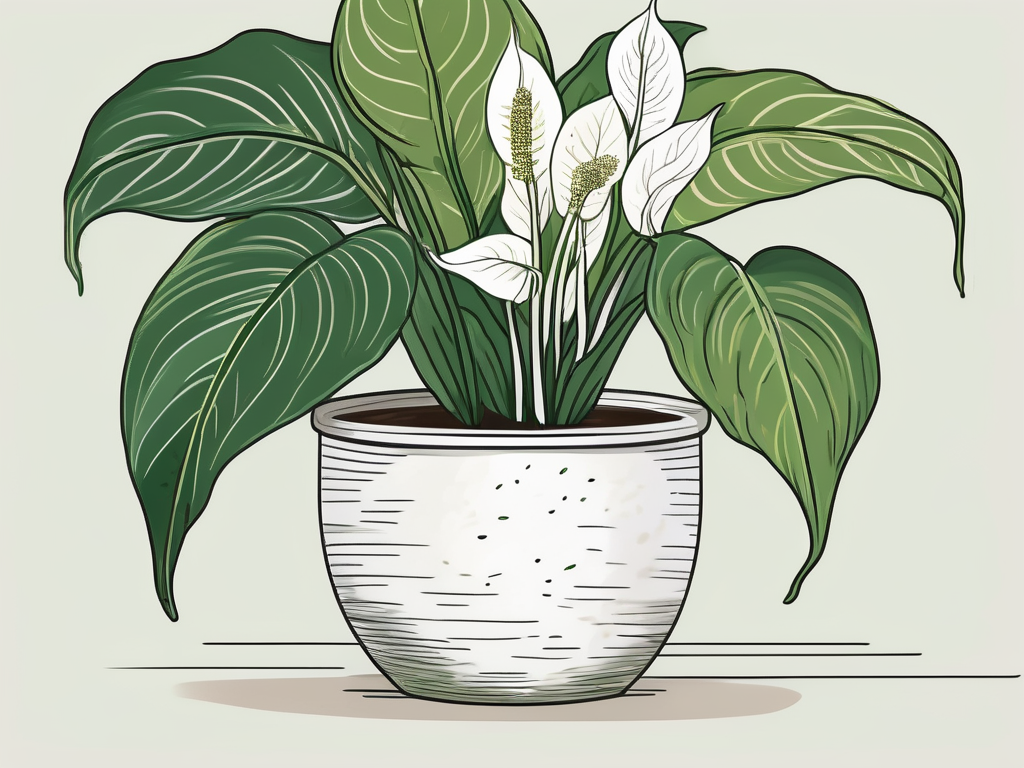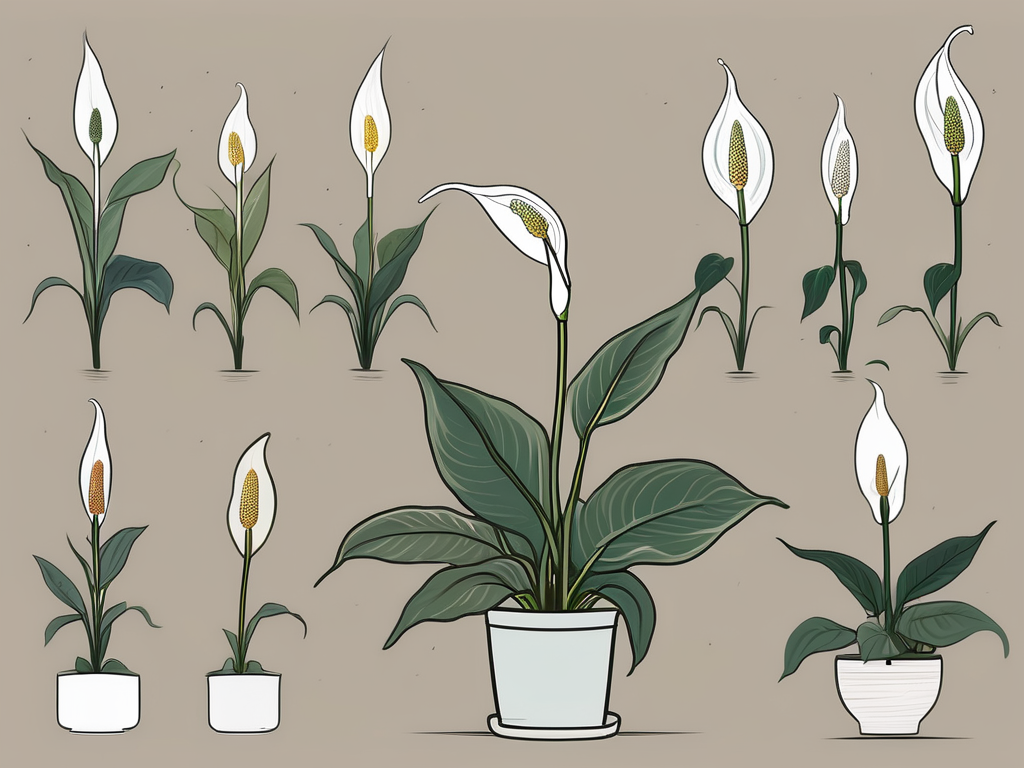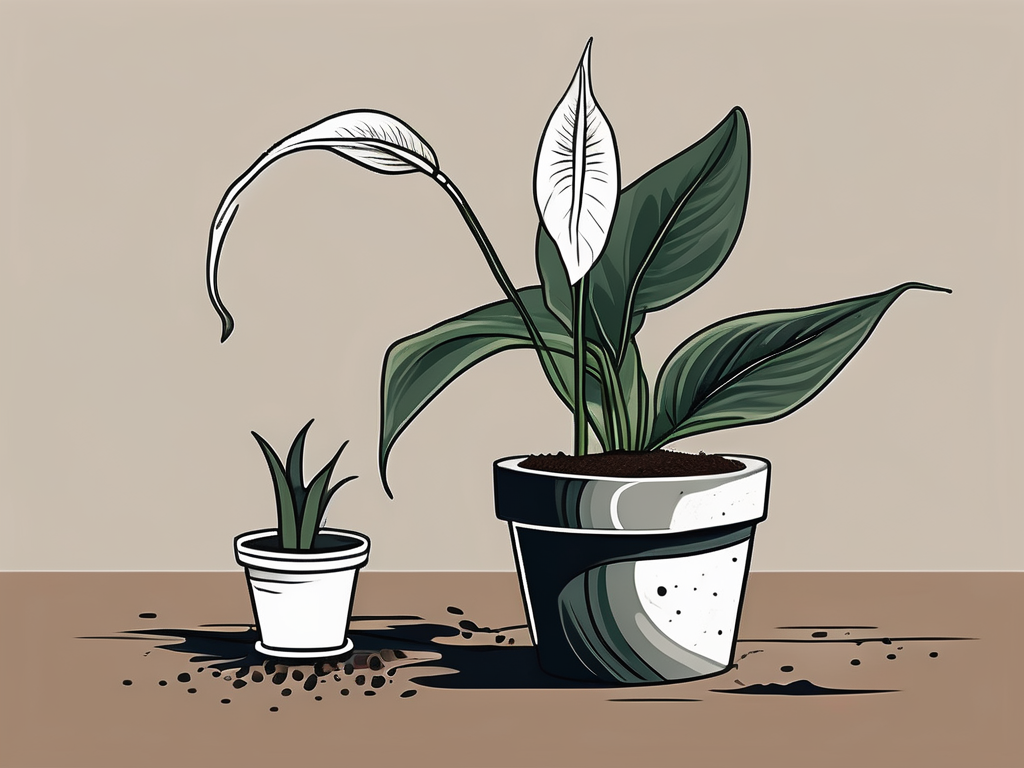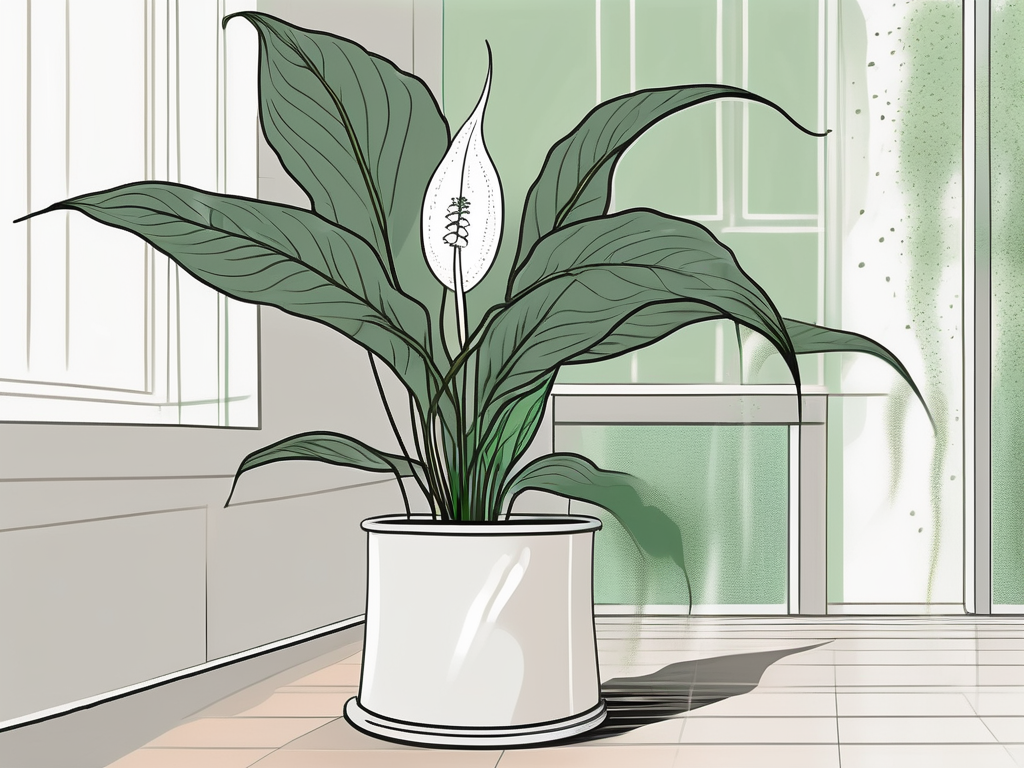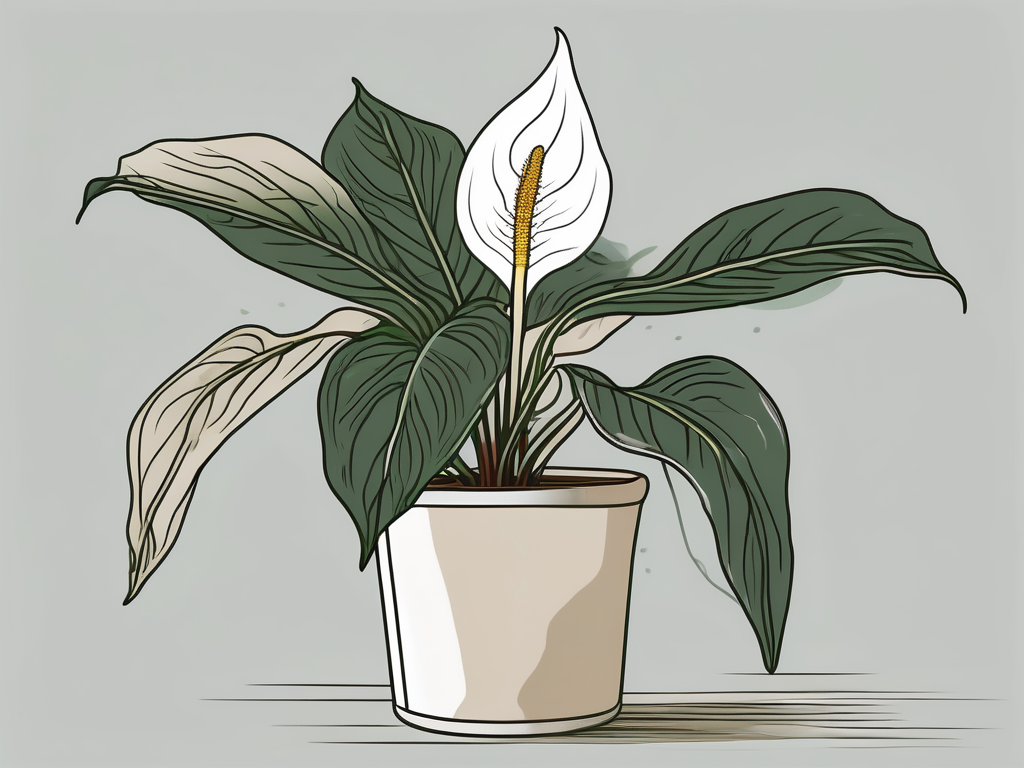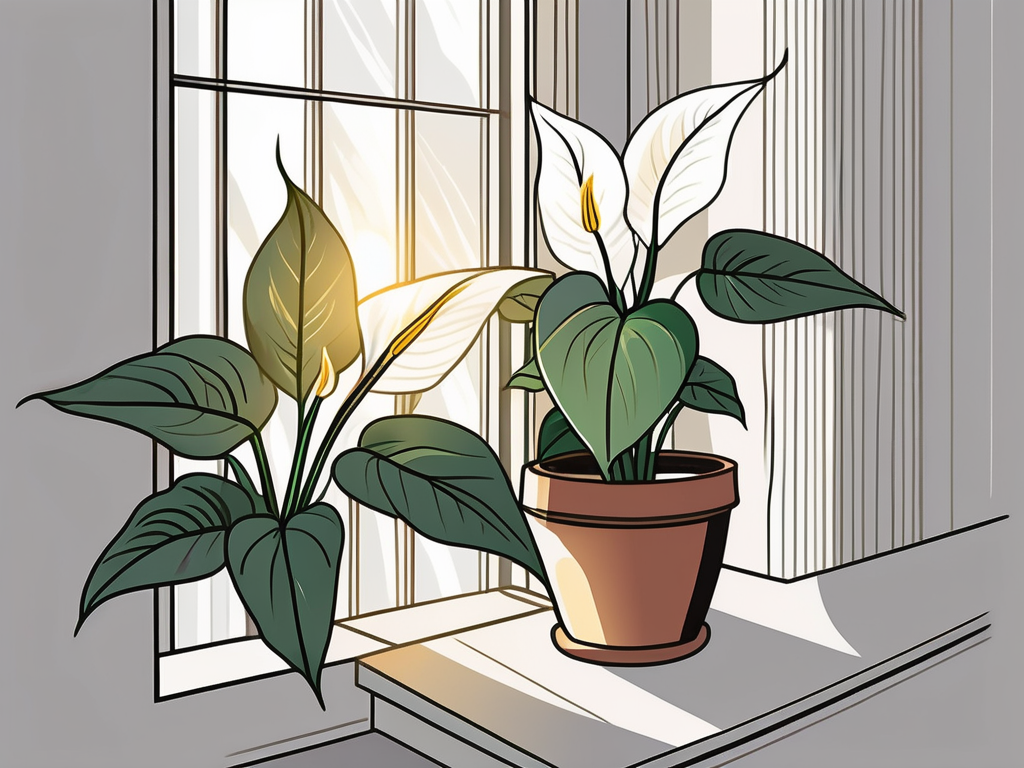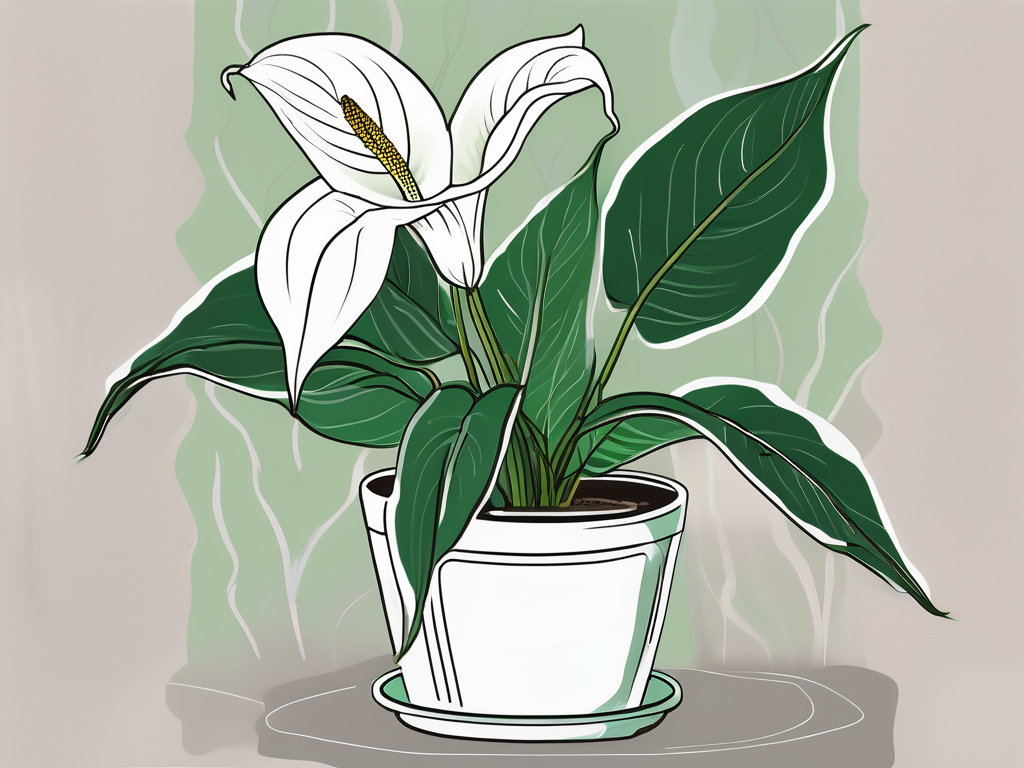
Ever wondered why the peace lily often finds its way into so many homes and offices? These charming plants, with their glossy leaves and elegant white blooms, have captured the hearts of plant lovers everywhere. But there's more to the peace lily than just its good looks.
In this guide, we'll explore everything you need to know about peace lilies. From their fascinating origin and symbolism to practical tips on keeping them happy and healthy, we'll cover it all. So, whether you're a seasoned plant parent or a newbie looking to add some greenery to your space, stick around for some helpful insights.
What is a Peace Lily?
The peace lily, known scientifically as Spathiphyllum, isn't a true lily at all. It's actually a member of the Araceae family, which includes plants like the philodendron and the anthurium. Native to tropical regions of the Americas and southeastern Asia, the peace lily thrives in warm, humid environments. This makes them a perfect match for indoor conditions.
One of the reasons peace lilies are so popular is their striking appearance. They have glossy, lance-shaped leaves that can grow up to 16 inches long. The real showstopper, though, is the flower. What looks like a large white petal is actually a spathe, which surrounds a spike of tiny flowers called a spadix. This unique structure gives the peace lily its elegant, sophisticated look.
Aside from aesthetics, peace lilies are also known for their air-purifying abilities. They can remove toxins like benzene, formaldehyde, and trichloroethylene from the air, making them not just beautiful but functional too. Who wouldn't want a plant that doubles as a natural air purifier?
Symbolism and Cultural Significance
Peace lilies aren't just pretty faces; they carry a wealth of symbolism and cultural significance. Often associated with purity, peace, and healing, these plants are a popular choice for gifts and occasions where these sentiments are appreciated. Interestingly, the white blooms of the peace lily are often used to symbolize peace and tranquility, which is why you might see them in places meant for reflection or remembrance.
In various cultures, peace lilies are also seen as symbols of prosperity and hope. They are frequently given as housewarming gifts or to someone embarking on a new venture, as they are believed to bring good fortune. Their enduring nature and ability to thrive in various conditions make them a fitting representation of resilience and adaptability.
So, if you're looking for a plant that carries a deeper meaning, the peace lily is a wonderful choice. It not only beautifies your space but also adds a layer of symbolism that can enrich your environment.
Choosing the Right Peace Lily for Your Space
When it comes to selecting a peace lily, you have a few options to consider. While they all share the same basic characteristics, there are different varieties that might suit your space better than others.
- Standard Peace Lily: This is the most common variety you'll find. It grows to a manageable size, making it ideal for most homes and offices.
- Compact Peace Lily: If you're short on space, the compact variety is your best bet. It has all the charm of the standard peace lily but in a smaller package.
- Sensation Peace Lily: Looking for something a bit more dramatic? The sensation variety is the largest of the peace lilies, with leaves that can reach up to 20 inches long.
When choosing a peace lily, consider the size of your space and the amount of natural light it receives. Peace lilies are quite forgiving when it comes to light, thriving in low to medium light conditions. However, if you want your plant to bloom, it's best to provide bright, indirect light.
Also, think about the aesthetic you're going for. Do you want a plant that will make a statement or one that will quietly complement your decor? With the variety of peace lilies available, you're sure to find one that fits your style.
Potting and Soil Care
Getting the potting and soil right is crucial for a thriving peace lily. These plants prefer a well-draining soil mix, which helps prevent root rot, a common issue with overwatering. A standard houseplant potting mix works well, but you can add some perlite or orchid bark to improve drainage.
When it comes to pots, make sure you choose one with drainage holes. This allows excess water to escape, reducing the risk of soggy roots. If your pot doesn't have holes, consider using a nursery pot with holes inside a decorative container. This way, you can easily remove the plant to water it and let it drain thoroughly.
Repotting your peace lily every year or two is beneficial, especially if you notice the roots are filling up the pot. Spring is the best time to repot, as this is when the plant is actively growing. Choose a pot that's one to two inches larger in diameter than the current one, and refresh the soil to give your peace lily a nutrient boost.
Watering and Humidity Needs
Peace lilies are relatively easy-going when it comes to watering, but they do have their preferences. They like to be kept consistently moist but not soggy. A good rule of thumb is to water your peace lily when the top inch of soil feels dry to the touch. During the warmer months, you might find yourself watering more frequently, while in the cooler months, you can scale back.
One thing to watch out for is drooping leaves, which can be a sign of either underwatering or overwatering. If the leaves perk back up after watering, you were likely dealing with an underwatered plant. If they stay droopy, it might be time to check the roots for signs of rot.
As tropical plants, peace lilies also appreciate higher humidity levels. While they can tolerate normal household humidity, they'll thrive in a more humid environment. If your home is particularly dry, consider misting the leaves occasionally or placing the pot on a tray filled with pebbles and water. As the water evaporates, it will increase the humidity around the plant.
Dealing with Pests and Diseases
Like any houseplant, peace lilies can occasionally fall victim to pests and diseases. The good news is that they're generally pretty resilient. However, it's still important to be vigilant and take action at the first sign of trouble.
Common pests that might bother your peace lily include spider mites, mealybugs, and aphids. These can often be dealt with using a gentle insecticidal soap or neem oil. Make sure to follow the instructions on the product label and apply it to both the tops and undersides of the leaves for the best results.
Fungal issues, particularly root rot and leaf spot, can also affect peace lilies. Root rot is usually a result of overwatering, so the best prevention is to ensure good drainage and avoid letting the plant sit in water. Leaf spot, on the other hand, is often caused by leftover moisture on the leaves. To avoid this, water the plant at the soil level and try to keep the leaves dry.
Regularly cleaning your peace lily's leaves with a damp cloth can also help prevent pest and disease issues by removing dust and debris that might harbor unwanted guests.
Designing with Peace Lilies
Peace lilies are not just versatile in care, but also in design. Their lush green foliage and striking white blooms make them a fantastic addition to any decor style. Whether your space is modern, bohemian, or traditional, a peace lily can fit right in.
Consider placing a peace lily in your living room to create a focal point. The larger varieties, like the sensation peace lily, can stand alone beautifully in a corner or near a window. For smaller spaces, like a bathroom or bedroom, a compact peace lily on a shelf or side table can add a touch of greenery without overwhelming the space.
Peace lilies also play well with others. Pair them with plants of varying heights and textures to create an indoor garden feel. Their white blooms can provide a nice contrast to the deep greens and vibrant colors of other houseplants.
- Modern Spaces: Use sleek, minimalist pots to complement the clean lines of a peace lily.
- Bohemian Vibes: Combine with macramé hangers and earthy pots for a relaxed, eclectic look.
- Traditional Decor: Opt for classic ceramic pots in neutral tones to enhance the peace lily's timeless appeal.
Common Challenges and Solutions
Even though peace lilies are generally low-maintenance, you might encounter a few challenges along the way. Here are some common issues and how to address them:
- Brown Leaf Tips: This can be caused by low humidity, over-fertilizing, or fluoride in tap water. Try increasing humidity, reducing fertilizer use, and using filtered water for best results.
- No Blooms: Lack of flowers can be due to insufficient light. Try moving your peace lily to a brighter spot, but avoid direct sunlight, which can scorch the leaves.
- Yellow Leaves: Overwatering is often the culprit here. Ensure the soil is well-drained and allow it to dry out a bit between waterings.
By monitoring your plant's environment and making adjustments as needed, you can overcome these challenges and keep your peace lily looking its best.
Caring for Your Peace Lily Over Time
Like any relationship, your journey with a peace lily involves ongoing care and attention. As the plant grows, its needs can change, and it's important to adapt to keep it thriving.
Fertilizing your peace lily every six to eight weeks during the growing season (spring and summer) can help promote healthy growth and flowering. Use a balanced, water-soluble fertilizer and follow the package instructions to avoid over-fertilizing.
Pruning is another aspect of care that shouldn't be overlooked. Removing spent blooms and dead leaves not only keeps the plant looking tidy but also encourages new growth. Simply snip off the affected parts with clean scissors or pruning shears.
Lastly, take the time to rotate your peace lily every few weeks. This ensures that all sides of the plant receive equal light, promoting balanced growth. With a little patience and attention, your peace lily can be a long-lasting companion.
Peace Lilies and Pets
If you're a pet owner, you'll want to be aware that peace lilies are toxic to cats and dogs. The plant contains calcium oxalate crystals, which can cause mouth irritation, drooling, and difficulty swallowing if ingested by pets.
This doesn't mean you can't have a peace lily if you have pets, but it does mean you'll need to take some precautions. Consider placing the plant out of reach, such as on a high shelf or in a room your pets don't have access to. You can also train your pets to avoid the plant, although this might take some time and patience.
As always, if you suspect your pet has ingested any part of a peace lily, contact your veterinarian for guidance. With the right care and attention, it's possible to enjoy the beauty of peace lilies while keeping your furry friends safe.
Final Thoughts
Peace lilies are wonderful plants that bring both beauty and functionality to any space. With their air-purifying qualities and elegant appearance, they're a great choice for anyone looking to add a touch of greenery to their home or office.
At Cafe Planta, we offer a wide range of houseplants, including peace lilies, along with all the accessories you might need to care for them. Whether you're looking for advice on plant care or want to browse our selection, we're here to help. Don't hesitate to reach out via email or follow us on Instagram for more plant inspiration. We're excited to share our love of plants with you and help you create a thriving, beautiful collection in your home.














